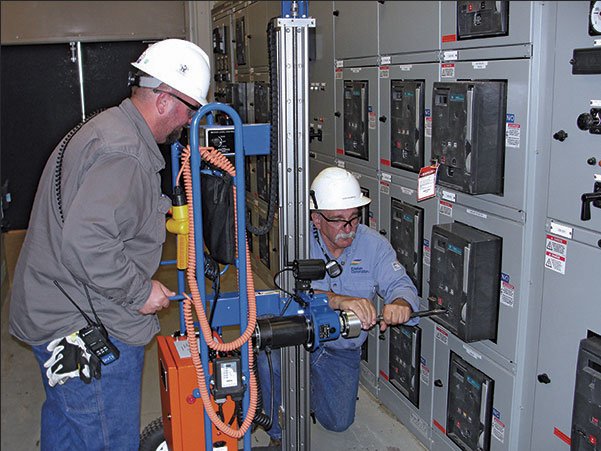May is National Electrical Safety Month, and it’s a timely reminder for Group CBS and its customers that the safety mind-set we maintain on the job every day is vital.
Statistics show that even trained professionals aren’t immune from electrical risks. OSHA reports that more than 2,000 workers are admitted into hospitals each year for treatment of serious arc-flash burns alone. That figure may only represent the tip of the iceberg. A study published in Industrial Safety and Hygiene News estimates that, on average, there are 30,000 arc-flash incidents every year, resulting in average annual totals of 7,000 burn injuries and 400 fatalities.
These are daunting numbers. Group CBS offers five tips to reduce these numbers by promoting electrical safety and preventing arc flash on the job.
- Train your people: Safety is a mind-set. But it competes with contrary mind-sets, such as pressure to maintain productivity, disregard for risk, and a simple lack of awareness. Training gives safety an edge over these other mind-sets by keeping it front and center. Follow OSHA regulations 29CFR1910.332 and .333, as well as NFPA 70E.
- Schedule regular maintenance: Routine maintenance is your next line of defense against arc flash and other electrical faults. Keeping power systems clean and verifying proper operation and insulation condition are essential. Most types of circuit breakers should be serviced every three to five years. Refer to NETA’s maintenance frequency MTS table to plan maintenance schedules based on equipment class and environmental conditions.
- Wear the appropriate PPE: You’ve heard it a thousand times, but it still bears repeating: Wear the appropriate PPE. Unsure how to define what’s “appropriate”? Refer to NFPA 70E Tables 130.7(C)(15)(a) and 130.7(C)(15)(c) to determine the right PPE clothing and accessories based on the predicted energy exposure. Better yet, have CBS Field Services engineering team perform an arc flash engineering study for your facility and remove the guesswork.
- De-energize equipment: De-energizing electrical equipment is critical, but always assume electrical circuits remain energized until tested and grounded. Always employ the “live-dead-live” method of testing equipment. Stored energy can create a hazard once equipment is de-energized and that is the reason to apply appropriate grounds. Require employees to use insulated tools or handling equipment in case they make contact with exposed energized conductors or circuit parts.
- Keep your distance: Remote racking and switching equipment for electrical circuit breakers, motor controls, and related gear is recognized as the most-effective way to prevent injury from an arc flash through the application of a simple principle: distance. Group CBS affiliate CBS ArcSafe offers the industry’slargest inventory of remote racking and switching solutions for low- and medium-voltage switchgear, allowing technicians to operate equipment outside the arc-flash boundary.
Every month is National Electrical Safety Month for electrical and plant workers who handle electrical equipment. But in the spirit of the awareness program, let’s take extra care this May.

